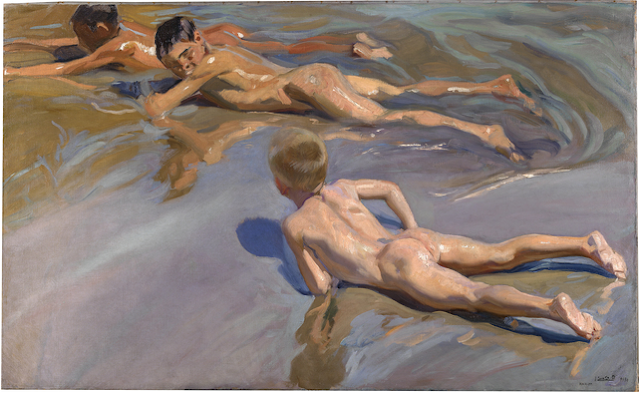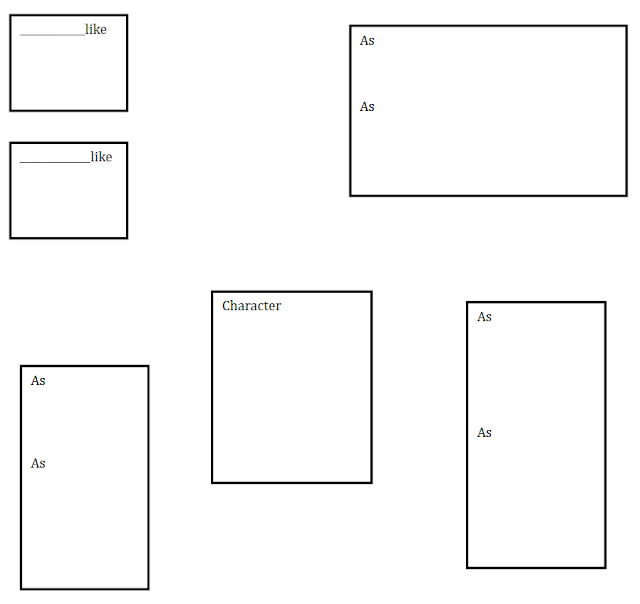
Last 25th January, Virginia Woolf's birth date was celebrated around the world, above all amongst literature lovers.
She was an English writer considered one of the foremost modernists of the 20th Century and a pioneer in the use of stream of consciousness as a narrative device. I studied and read her pieces of writing during my degree studies and I fell in love
with her!!!
I've always included her birthday as a teaching unit for my students, no matter their level. Two weeks ago, that same day, my Bachillerato students learnt about her (they had never heard of this wonderful writer).
These are some of her most famous quotes:


In this video, you can learn about her life in a different way (sorry, but TikTakDraw is in Spanish).
My students particularly love this Youtube channel: https://www.youtube.com/watch?v=rETE0IGDqEE
No Man is an Island (1624)
By John Donne
No man is an island,
Entire of itself,
Every man is a piece of the continent,
A part of the main.
If a clod be washed away by the sea,
Europe is the less.
As well as if a promontory were.
As well as if a manor of thy friend's
Or of thine own were:
Any man's death diminishes me,
Because I am involved in mankind,
And therefore never send to know for whom the bell tolls;
It tolls for thee.
Edward Hopper, Office in a Small City - 1953
Matching poems written in English language
with famous paintings
Shared by Beatriz Monje:
Poems and famous paintings
Level: A2 to C2. Any level secondary school level depending on the poem chosen.
Organization: Single students, pairs or groups. Depending on the teacher’s choice.
Language focus
That on each of the poems. Also descriptive language, colours, shapes, present simple. Describing a picture: on the forefront, on the background, on the right, on the left… you can see or passive voice: it can be seen…
Language for presenting a topic (higher levels).
Objectives
1. Practice reading comprehension by reading and understanding famous poems written in English language.
2. Analyse the meaning of the poem and the reasons why students chose a particular painting to match a poem by focussing on the meaning of both, the poem and the painting and how that is relevant to the students’ personal experiences and previous knowledge of the world.
3. Practice written language by taking notes to prepare an oral presentation.
4. Practice oral production by presenting work to the rest of the students in class.
5. Practice oral comprehension by listening to the presentations of the rest of the students in class.
6. Practice question making.
What Am I?
By Jo Peters
I have no colour,
not even white,
but sometimes I’m wide and blue.
Sometimes I’m still,
and sometimes I rush,
and I can fall down on you.
I can change my shape,
I often do,
but I’m hard to hold in you hand.
You need me to make
your castle stand up
when you’re playing in the sand.
I haven’t much taste
but on a hot day
your tongue’s hanging out for me.
Then I am cold,
but I can be hot
when I’m in your mum’s cup of tea.
What am I?
Remedios Gómez shares:
If you are one of those who think English has always sounded in the same way, you are wrong. There are clear samples of this change of sound in films, for instance.
In the following video, you'll be able to listen to that sound difference:
Ruby Vurdien shares this poem by James Joyce:
Bright cap and streamers
A poem I usually try with higher level students is "Fire and Ice" by Robert Frost:
I realize that there are lovers of poems in this course, so I would like to share with you this poem by Carol Ann Duffy. Not only can it be useful for teaching vocabulary but it can also promote a discussion on the topic of love and different types of love.
Carol Ann Duffy is an award-winning Scottish poet known for writing love poems that often take the form of monologues.
“A CROW AND A SCARECROW”
A crow and a scarecrow fell in love
out in the fields.
The scarecrow’s heart was a stuffed leather glove
but his love was real.
The crow perched on the stick of a wrist
and opened her beak:
Scarecrow, I love you madly, deeply.
Speak.
Crow, rasped the Scarecrow, hear these words
from my straw throat.
I love you too
from my boot to my hat
by way of my old tweed coat.
Croak.
The crow crowed back,
Scarecrow, let me take you away
to live in a tall tree.
I’ll be a true crow wife to you
if you’ll marry me.
The Scarecrow considered.
Crow, tell me how
a groom with a broomstick spine
can take a bride.
I know you believe in the love
in these button eyes
but I’m straw inside
and straw can’t fly.
The crow pecked at his heart
with her beak
then flapped away,
and back and forth she flew to him
all day, all day,
until she pulled one last straw
from his tattered vest
and soared across the sun with it
to her new nest.
And there she slept, high in her tree,
winged, in a bed of love.
Night fell.
The slow moon rose
over a meadow,
a heap of clothes,
two boots,
an empty glove.
I was hanged for living alone
for having blue eyes and a sunburned skin,
tattered skirts, few buttons,
a weedy farm in my own name,
and a surefire cure for warts;
Oh yes, and breasts,
and a sweet pear hidden in my body.
Whenever there’s talk of demons
these come in handy.
Here you can read the whole poem: Half-Hanged Mary:
https://loadedliteraturepodcast.wordpress.com/2018/08/08/half-hanged-mary-by-margaret-atwood/
I strongly recommend Louise Penny's novels as a joy and a source to understand the French and Anglo relationships in Quebec and Canada.

More information about Louise Glück and her work in:
https://www.poetryfoundation.org/poets/louise-gluck
https://www.nytimes.com/2020/10/08/books/nobel-prize-literature-winner.html
and don't hesitate to use poetry in the classroom, it's a great cultural resource.
The aim of the activity is to encourage learners to create a video inspired by the poem. The video also includes a 15 year old student recitation of the poem.
The video was created using Adobe Spark, which is a free online tool very easy to use.
Source provided by CFP en Idiomas
- Why should I use poetry in the classroom?
- How do I select suitable poetry for the students age and knowledge of English?
- What resources are there available to assist me in this process?
- How do I assess poetry?
- As an alternative introduction to a topic or unit
- To focus on a broader cross-curricular or socio-cultural
subject
- To practice specific vocabulary
- As an alternative listening exercise
- As a poetry breaks
- Targeted writing practice; developing rhyme and rhythm for
example
 ‘Pretty
Ugly’, by Abdullah Shoaib
‘Pretty
Ugly’, by Abdullah Shoaib I’m very uglySo don’t try to convince me thatI am a very beautiful personBecause at the end of the dayI hate myself in every single wayAnd I’m not going to lie to myself by sayingThere is beauty inside of me that mattersSo rest assured I will remind myselfThat I am a worthless, terrible personAnd nothing you say will make me believeI still deserve loveBecause no matter whatI am not good enough to be lovedAnd I am in no position to believe thatBeauty does exist within meBecause whenever I look in the mirror I always thinkAm I as ugly as people say?
Nicholas Was...
older than sin, and his beard could grow no whiter. He wanted to die.
The dwarfish natives of the Arctic caverns did not speak his language, but conversed in their own, twittering tongue, conducted incomprehensible rituals, when they were not actually working in the factories.
Once every year they forced him, sobbing and protesting, into Endless Night. During the journey he would stand near every child in the world, leave one of the dwarves' invisible gifts by its bedside. The children slept, frozen into time.
He envied Prometheus and Loki, Sisyphus and Judas. His punishment was harsher.
Ho.
Ho.
Ho.
The foregoing is excerpted from Smoke & Mirrors by Neil Gaiman.
Example: https://www.poetryfoundation.org/poems/44272/the-road-not-taken
Calligrams and acrostic poems
- Understanding character traits – see additonal material using Roald Dahl’s Dirty Beasts and Revolting Rhymes as an example
- Putting together comics/videos/performances – this will be explored in more depth in the modules on narrative an drama
- Production of limericks, acrostic poems
- Debates about topics raised in the poems

















Hello,
ResponderEliminarAs I told you on thursday there is a website, many of you already know, called "Film English | by Kieran Donaghy"
where you can find a beautiful video "Real Beauty" which could well be used with the poem "Pretty Ugly" Riona gave us. Anyway, I have found it: http://film-english.com/2013/05/06/real-beauty/
Hope you enjoy it.
América de la Torre IES Comuneros de Castilla